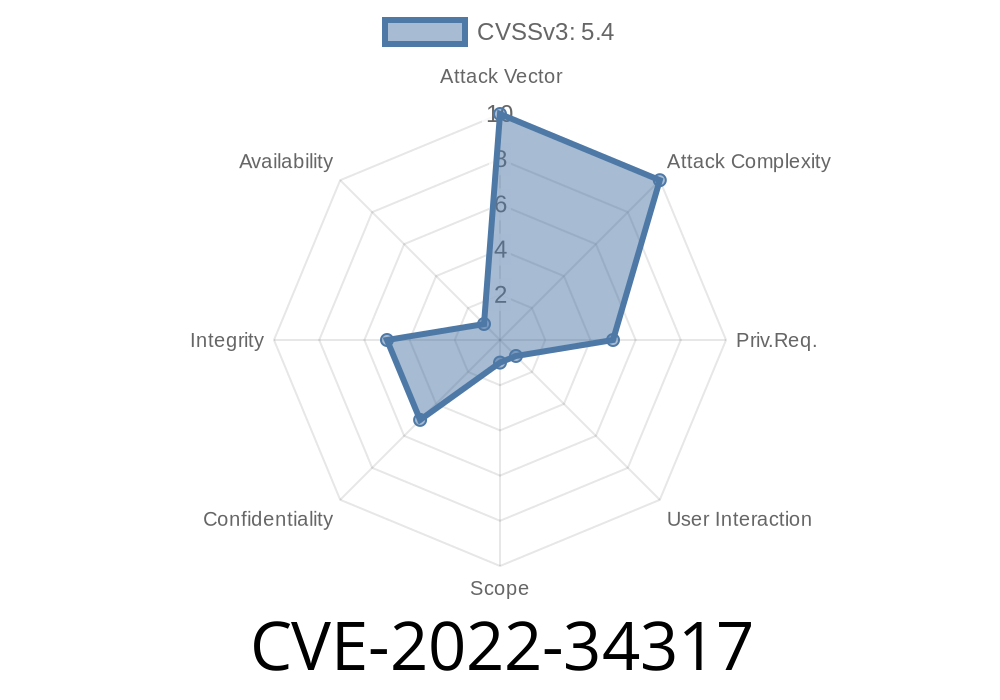IBM's CICS TX 11.1 was recently revealed to be susceptible to a Cross-site Scripting (XSS) vulnerability, which exposes the application's Web UI to several risks like arbitrary JavaScript code execution and potentially, credentials disclosure. In this long-read post, we will analyze this security threat, detail the inner workings of the XSS exploit, provide you with code snippets, and supply links to original references for a better understanding of the problem at hand.
CVE and IBM X-Force Details
The vulnerability was assigned CVE-2022-34317 (link) by the Common Vulnerabilities and Exposures (CVE) program. IBM X-Force, IBM's world-renowned security research team, assigned an identification number of 229459 (link) to this issue.
Background
IBM's CICS TX 11.1 is a comprehensive application development and execution environment, capable of serving a wide range of business solutions. Its Web UI enables users to interact with data, run applications, and manage transactions. However, the XSS vulnerability puts it at risk, as threat actors can potentially modify the application's intended functionality and expose sensitive user information.
Cross-site Scripting (XSS) Vulnerability Explained
A cross-site scripting flaw enables an attacker to inject malicious scripts into a legitimate website. These scripts can access cookies, session tokens, or sensitive page content and alter a website's functionality. In the case of IBM CICS TX 11.1, this vulnerability allows users to embed arbitrary JavaScript code into the Web UI, potentially leading to credentials disclosure within a trusted session.
To showcase the XSS vulnerability, let's consider the following code snippet
<!-- Vulnerable CICS TX 11.1 Web UI HTML Code -->
<input type="text" name="user_input" value="">
<!-- Attacker Injects Malicious JavaScript Code -->
<input type="text" name="user_input" value=""><script>alert('XSS')</script>
In this example, a user's input is not properly sanitized, enabling the attacker to inject a simple <script> tag that displays an alert with the message "XSS." While this example may appear harmless, the risks can escalate when attackers use similar techniques to execute JavaScript code that steals sensitive user information or manipulates the Web UI.
Mitigation and Patch Information
IBM has acknowledged the XSS vulnerability in CICS TX 11.1 and has released an official patch to address the issue. Users are strongly advised to update their CICS TX systems to the latest version to mitigate the vulnerability. You can find the patch and further information in IBM's official Security Bulletin (link).
To learn more about the vulnerability, you can explore the following resources and references
1. Original CVE Entry: https://cve.mitre.org/cgi-bin/cvename.cgi?name=CVE-2022-34317
2. IBM X-Force Vulnerability Report: https://exchange.xforce.ibmcloud.com/vulnerabilities/229459
3. IBM Security Bulletin: https://www.ibm.com/support/pages/node/6528548
4. CICS TX Product Overview: https://www.ibm.com/products/cics-tx-library
5. OWASP's Guide to Cross-site Scripting (XSS): https://owasp.org/www-community/attacks/xss/
Conclusion
The discovery of the XSS vulnerability in IBM CICS TX 11.1 brings attention to the importance of proper input validation and sanitization in web applications. By understanding the exploit, keeping systems updated with the latest patches, and adhering to security best practices, organizations can effectively secure their application environment against such threats.
Timeline
Published on: 11/14/2022 20:15:00 UTC
Last modified on: 11/16/2022 19:15:00 UTC
